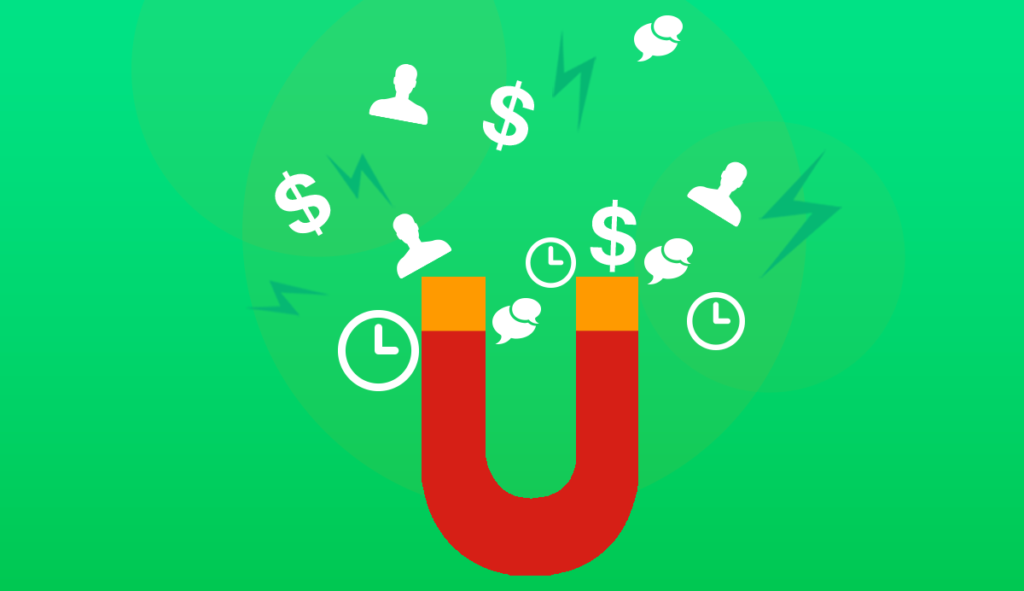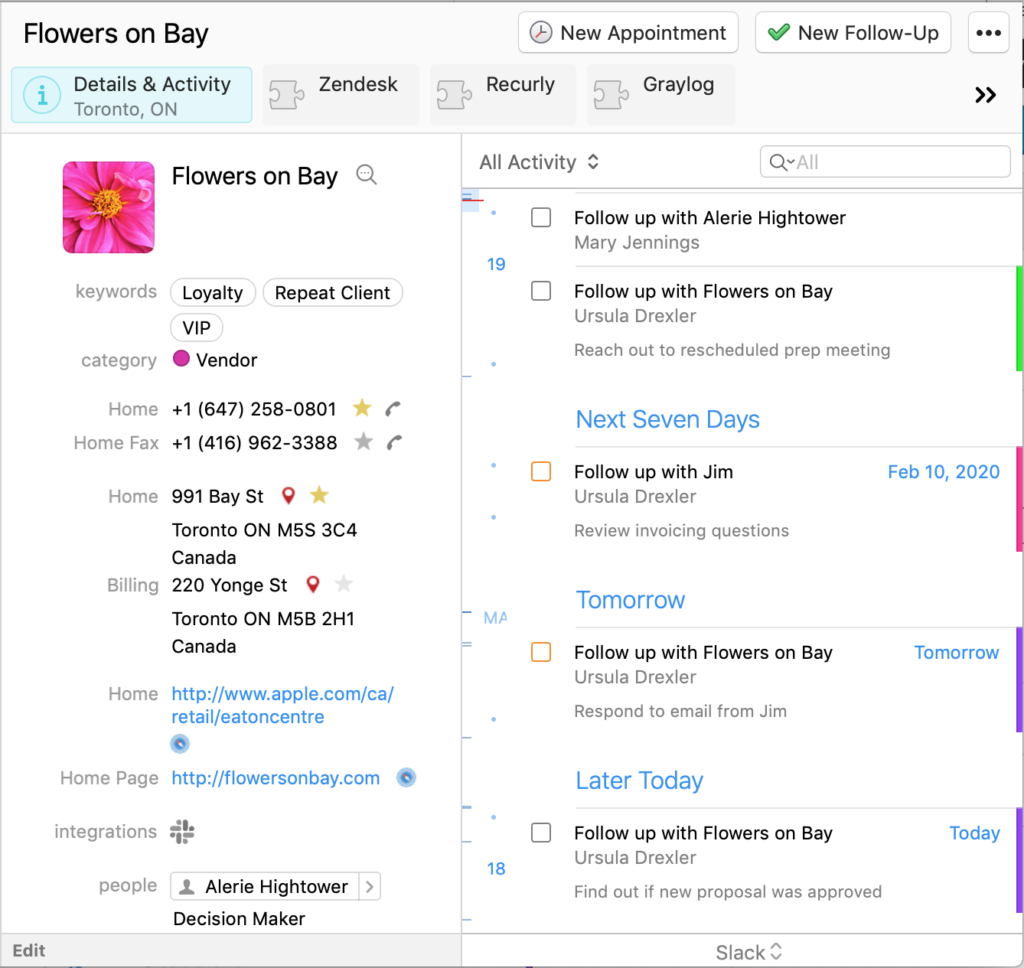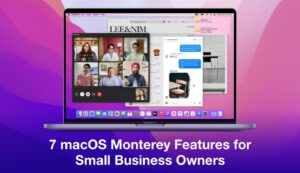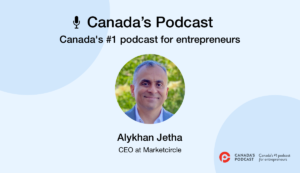In the first few years of running your business, you’re bound to face challenges that threaten your survival rates.

The US Bureau of Labor Statistics reports that 20% of businesses don’t make it past the first year and, by the end of the first decade, 80% have already caved in.
With such survival rates, it’s easy to understand why most small business owners are worried wondering how to attract and retain customers, hire the right people, and outdo their competition.
In the past few years, small business owners have had to adapt to new marketing strategies, invest in, and use new technologies to remain competitive.
Since no one can master all these at the same time, the situation becomes even worse if marketing is just another hat worn by you or any of your employees.
And you’re not alone in this. Most startups have grappled with similar challenges with one exception: they have overcome these challenges and grown into profitable businesses in record time.
So what’s their secret? Let’s find out…
1. Segment your audience
You already know who your target customers are. But you can’t treat them as a single entity because each of them has different needs. Besides, they’re on different stages of the buyer’s journey.
Not sure what I mean? Here’s an example from account firm Lyfe Accounting:
This is one brand that knows how to segment their audiences, despite them being quite similar.
In the above example, they have a landing page for their target audience of business owners who would benefit from CPA services for small businesses.
On their other landing page, they’ve segmented an audience of small businesses who need tax preparation services.
While both serve a core audience of small businesses, the needs are entirely different and this is what I call audience segmentation.
I mean, have you ever reached out to a business wanting to get information on a problem you had, and all they did was ask you to buy from them without answering your questions?
That sucks, and I’m sure you never bought from them.
When you fail to understand and respond to your prospects’ and customers’ needs appropriately, you turn them off. And since you aren’t meeting their needs, they’ll have no other option other than going to your competitors.
The solution to this? Segmentation.
It sounds simple, but it isn’t. Successful startups do more than have a buyer persona (or an Ideal Customer Profile). They understand their customer needs and behavior, which helps them segment them into different groups.
This helps them understand where they are in their buyer’s journey, the problems they have in each stage, and how to tailor their marketing messages to solve these problems.
Let’s see how this works:
A financial consultant who is ready to pay for Daylite to improve their efficiency and close more deals will look at what other financial consultants using the product are saying.
Since Daylite serves customers from different industries, they have case studies for each market segment to help their prospects have an easier time deciding whether to buy or not. Take a look:
These customer stories help them meet their prospects’ needs by answering the questions they have just before they buy. This clears their doubts, paving the way for them to move to the next stage of the sales funnel which, in this case, is buying the product.
Another idea? Turn your best case studies into an insightful blog post, like this one from Upserve:
Now tell me if you were a restaurant owner that you wouldn’t be enticed when you saw that subject line. Better yet, you might even share it with your network of restaurant owners and managers.
Don’t forget to highlight some social proof as well, whether it’s in the form of testimonials or publication features as seen on my blog below:
If you serve a diverse audience, be sure to feature that so prospects aren’t left wondering if your solution is for them.
Segmenting your customers and sending targeted email campaigns is a continuous process. In addition to having a buyer persona, study their behavior, and conduct surveys to get more information from them so that you segment them correctly and run effective marketing campaigns.
2. Publish Compelling content
Startups need to keep attracting new investors or maintain the ones they already have. And this means that they need to build authority, get new leads, and customers consistently. While content may not be the primary driver for your business growth, most startups have relied on it to build authority, get leads, and customers.
According to Demand Metric, content costs 62% less and generates 3x more leads as compared to traditional marketing efforts.
Still not convinced? Hubspot, for instance, has managed to generate 75% of their leads from content alone. If you aren’t publishing high-quality content on your blog, then you’re ignoring a key growth driver for your business. Here’s why:
72% of buyers use Google to find the information they need, which is mostly blog posts and customer reviews.
If you don’t show up in their search results, how will they find you? So, identify 3-5 questions that your customers and prospects have. Use a writing tool to write content that provides relevant answers to these questions. Aim for at least 2,000 words or longer than what others have published in your space.
Start creating ultimate guides that cover tons of different sub-topics. This can be done in any business space, from Hawaii travels to photography and real estate:
Help your readers implement what they learn by providing them with checklists, mind maps, and ebooks that they can access once they give you their contact information.
Once you finish writing, optimize each piece of content for SEO to improve your rankings, and drive more organic traffic.
Include relevant keywords in your headline, introduction, and conclusion. Sprinkle secondary keywords in different parts of your post and use relevant images every 100-200 words.
If you want more tips for the content creation process, I write about this more extensively in my how to start a blog guide on AdamEnfroy.com.
Want to take your content quality to the next level? Start using custom development for things like tables and interactive images. For example, take a look at how Each Night does this on their mattress review blog posts:
Remember, quality trumps quantity — every time. So you don’t have to publish a new post every day. Once or twice a week will do.
Better yet, take that content you’ve written and repurpose it into a podcast and YouTube videos to get the maximum reach.
3. Use social media to build relationships
The cost of ads is increasing, and getting social media users to pay attention to you is proving to be harder than ever before.
In addition to using social media to sell, you also have an opportunity to build relationships with your prospects and customers – a cheaper and effective approach to driving more traffic and generating leads.
So, how do you get started with social media marketing?
Choose ONE social media platform where your target audience hangs out. For instance, LinkedIn has 335 million users, so you’ll never run short of prospects to interact and build relationships with.
First, share the content you publish on your blog then look out for their responses and tweak your future content to answer the questions that emerge.
Sometimes I like to generate QR codes to insert into my blog posts, which help make social sharing 10X easier as readers can just scan the code and instantly share it across their networks.
As you do this, you will increase your brand awareness and position yourself as an authority.
From here you can start to treat LinkedIn like startups do: a place to engage, pitch, and conduct outreach!
One of my favorite tools for engagement and outreach on LinkedIn is Reply for sales automation:
Reply connects directly to your LinkedIn account and helps you pull contact data, directly importing it into an outreach drip style campaign:
When you start sending personalized LinkedIn requests, your prospects will connect with you and be open to talking to you about what they like, their needs, and pain points.
If your service turns out to be a great fit for them, then it becomes easier to sell it. You’ve already positioned yourself as their best solution to their problems.
4. Use High Converting Landing and Home pages
How often do visitors arrive on your website’s home page or any of your landing pages, then leave without a second thought? Ever wondered why they don’t stay?
Here are three reasons why they don’t stick around (or even convert) on your home pages and landing pages:
- You don’t clarify the benefits
- You don’t establish trust
- You don’t tell them what to do next
These three elements make up the first impression your visitors have, and they determine whether they stay or not. Let’s break them down one by one:
You don’t clarify the benefits- When a visitor lands on your website, they want to know what they stand to gain. If they have to think through to understand what’s in it for them, they’ll walk away.
This can be done via a value proposition. In other words, a distinct headline that explains how your product or service will benefit the potential customer.
My favorite example is from Somnifix:
It doesn’t get more clear in terms of value than that:
Don’t let mouth breathing ruin your sleep….and your partner’s too
Fantastic.
You don’t establish trust- According to Hubspot, businesses with 10-15 landing pages increase the number of leads they get by 55%. More landing pages and home pages mean more opportunities to customize the offers you have and use relevant copy and testimonials for the traffic you send to these pages.
You don’t tell them what to do next- If you assume that your visitors know what to do next, you’re going to lose them. Be clear about what they need to do once they land on your homepage or landing page, so they have an easier time deciding whether to stick around or leave.
For instance, LFA Machines is a great example of this, directly funnelling traffic into a lead magnet:
After all, you only want to work with people who are interested in what you’re offering, right? Then use a clear call to action buttons to help you weed out the tire kickers.
5. Diversify your traffic sources
Getting more inbound traffic using guest blogging has always worked well, but podcasting helps you have your cake and eat it. Here’s how:
As a business owner, you have a lot to do and publishing a high-quality blog post on your blog and on other blogs feels like a chore. So podcasting makes it easier for you since you don’t have to write. You only need to prepare your topic, show up, share valuable content, and still get valuable links to your website from the show notes.
Besides, a blog helps you get hold of an audience segment that prefers reading, while a podcast enables you to get hold of an audience segment that prefers tuning in to listen to content. According to Statista, 32% of US adults tuned in to listen to a podcast in the past month.
See? It’s a win-win for everyone, minus the writing part.
So, to get started with podcasting, appear as a guest on relevant podcasts with established audiences. Identify 3-5 podcasts that your target prospects listen to, come up with interesting topics, then reach out to the host asking to appear as a guest.
Every time you appear as a guest, you are passively building your audience, so once you’re ready to start your podcast, you’ll have an audience to get you going. Get your podcast listed on Spotify, Apple Podcasts, and Google Podcasts to help other podcast listeners find it, which in turn, will improve the size of your audience.
6. Nurture Your Leads
Getting hold of your prospect’s attention is half the battle. Keeping them engaged with you until they are ready to buy (and probably after they buy) is the other half.
And that’s where most marketers lose it. In fact, Venngage reports that 90% of marketers are unhappy with their lead generation efforts, and one of the reasons behind this is failing to follow up with the leads they acquire.
Depending on where you get your leads, you need to maintain the momentum of your conversation by building a relationship with them, or else, they’ll stop paying attention to you.
Besides, you aren’t looking for a one time sale, so the relationships you build with your leads should pay you back through loyalty and more referrals to your business.
Let’s say you hosted a webinar, which according to GetVoIP, is a great first step towards breaking into a new market.
Webinars make great bottom of the funnel content for generating leads and later converting that traffic into customers once they go through your funnel (assuming your webinar provides tons of value, that is).
In my webinar software post at AdamEnfroy.com, I write more in-depth about hosting webinars, how to promote them, and which software to use depending on your needs.
Once you’ve moved prospects through the bottom of your funnel — whether that’s a webinar or blog post, I highly recommend using a strategy to get them on your email list so you can begin the nurture process.
According to Style Factory, email campaigns have an ROI of 4300%… Need I say more?
Use a tool like Daylite to setup email sequences (welcome emails, onboarding emails, and segmentation emails) for the leads you capture and deliver more content without being salesy.

In your emails, let them know that you are open to answering the questions they have to keep the conversation going. In your email signature, give them other ways to contact support too for ease of use.
Basically, be sure to provide enormous value and always include a call to action that encourages a click or a reply so that the reader is constantly engaged.
Bonus tip: try offering a referral bonus once a lead converts to maximize the opportunity while it’s still hot.
Conclusion
If you’ve been struggling to generate more leads due to a lack of resources and time, remember that while you can’t get all the resources you need, you have the time to invest in your marketing activities.
So you need to make sure that every marketing activity you spend time on has a significant impact on the number of leads you get. That’s what successful startups do even when the odds are stacked up against them.
So, look at what we’ve covered so far. Choose ONE marketing strategy that you know will give you the quickest win. Commit to it for the next 90 days, measure the results you get, and improve on them.
Taking action will set you apart from 90% of other small businesses that know what to do but don’t take action. So, what are you waiting for?
Adam Enfroy writes about how to scale your blog like a startup to 250,000 monthly readers at www.adamenfroy.com. He launched his blog in 2019 and started generating over $35,000/month in revenue within 9 months. He wants to teach new bloggers how to start a blog and do the same.


